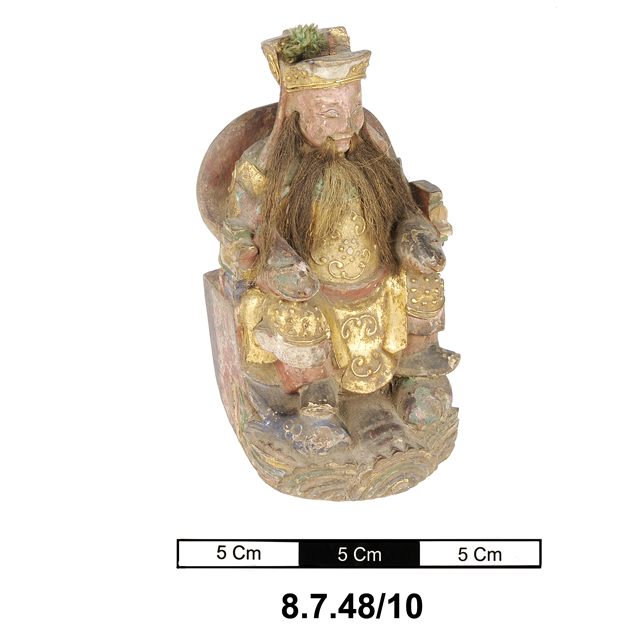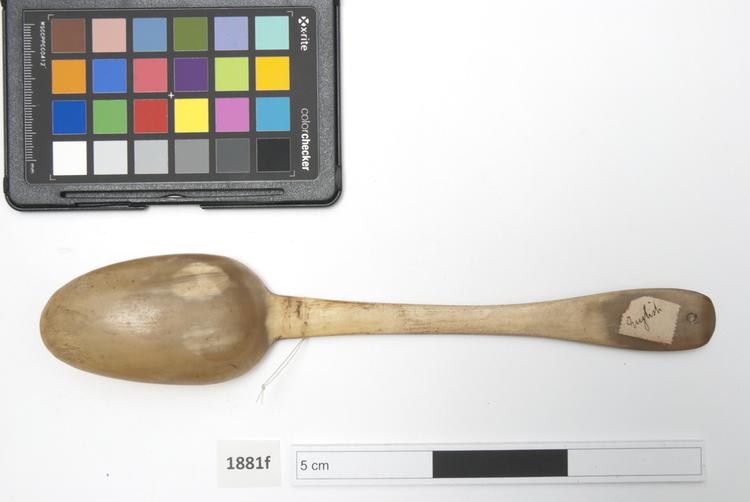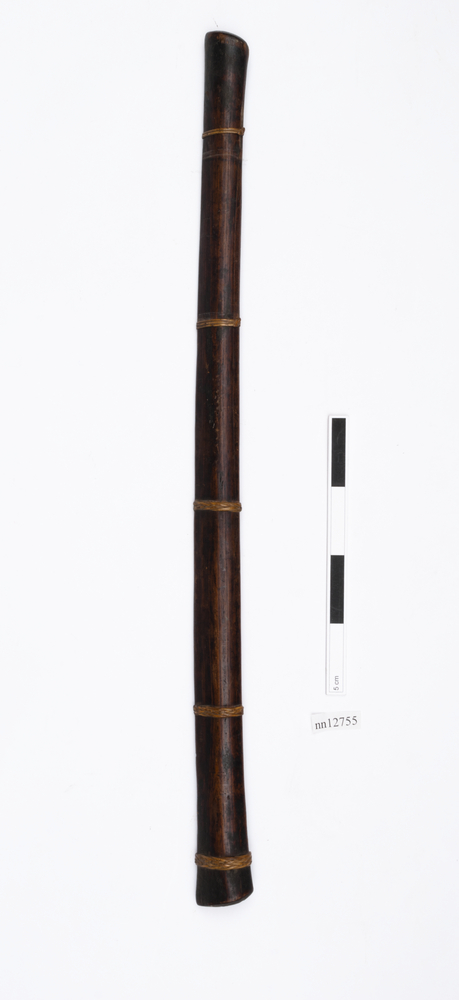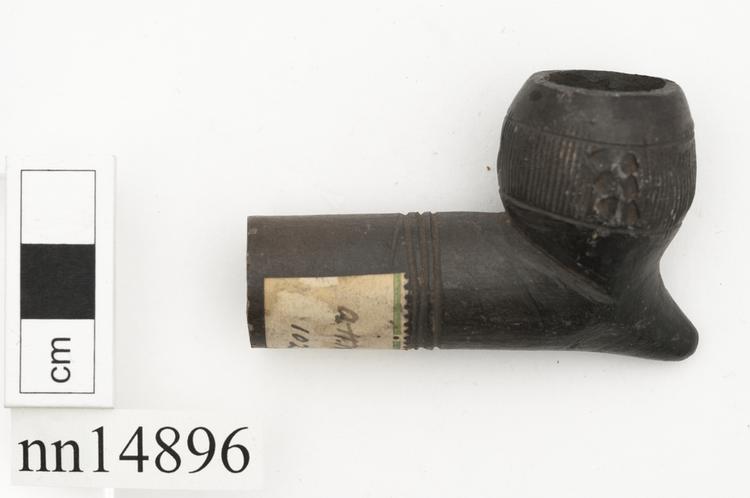
One of the 29 puppets telling the tale of the Tiger Story. This shadow puppet represents the 'tomb of the old woman', as indicated in an inscription in English along the bottom, with red Chinese characters inscribed down the left hand side. There are two columns of inscriptions in Chinese characters. The column on the right reads 故母趙老㜑㜑 (‘㜑’ is the archaic Chinese character of ’婆’) 之墓 ‘gu mu chao lao po po zhi mu’, which refers to the ‘tomb of the old woman Mrs. Chao’. The inscription 虎孝子王扁嘴立’ hu xiao zi wang bian zui li’in the left column means ‘the tomb was set up by her filial/ dutiful tiger son’.
The tiger story might be one of the tales from the book �齋誌異 ’L’iaozhai Zhiyi’ (also translated as ‘Strange Stories from a Chinese Studio’). It is a collection of nearly 500 mostly supernatural tales written by 蒲�齡 ‘Pu Song-ling’ during the early Qing Dynasty. The tiger story is briefly about a tiger who ate Mrs. Chao’s only son, felt sorry and tried to make up for its mistake. Therefore, the tiger often sent buckskin and jewellery to her door to give Mrs Chao a wealthy life, but they never met. After Mrs. Chao’s death, the tiger cried sadly in front of her tomb. The local residents found it really touching so they built a shrine in honour of the faithful Tiger.






